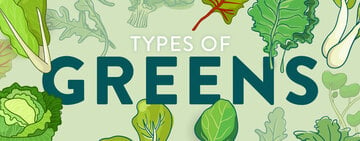
Efficient produce storage is a critical component of running a successful restaurant. Properly storing fruits and vegetables not only ensures their freshness and quality but also helps reduce food waste, ultimately saving your establishment money. By implementing effective storage practices, restaurants can prolong the shelf life of their produce, maintain flavor and nutritional value, and minimize spoilage. Below, we explore the best practices for storing various types of produce, helping you optimize your restaurant's operations and maximize your profitability.
Best Way to Store Produce

Below, we've listed some of the universal best practices for organizing your restaurant’s storeroom:
- Store produce at reduced temperatures to increase its shelf life.
- Don't stack produce. Pressure and lack of airflow shorten fresh produce’s lifespan.
- Keep produce unwashed in storage. When you’re ready to use your fresh items, make sure you wash your produce properly.
- Don't cut produce until you're ready to use it. Cut produce is vulnerable to microorganisms.
- Store your fresh produce where there is some airflow (not in airtight containers or bags). This prevents them from suffocating and spoiling faster.
- Don't buy fresh produce too far in advance. Produce loses its flavor and crispness when held at low temperatures for extended time periods.
How to Store Fruits and Vegetables Chart
When it comes to storing fruits and vegetables in a commercial setting, understanding the proper storage conditions is crucial to maintaining their freshness and quality. Different types of produce require specific temperatures and conditions to prolong their shelf life and prevent premature spoilage. Factors such as ethylene production and sensitivity also play a significant role in determining the storage requirements for fruits and vegetables. By following recommended guidelines for storage temperature, ethylene exposure, and handling practices, businesses can ensure that their seasonal produce stays fresh and appealing for an extended period.
 Printable Version
Printable Version
What Is Ethylene?

Ethylene is a plant hormone that makes seeds/buds sprout, ripens fruit, and causes plant cells to break down. Plants release ethylene as a gas.
Understanding ethylene helps you extend the shelf life of your fruits and vegetables. The first thing you need to know is plants’ ethylene productions and sensitivities are not universal. So, you should store ethylene producers separate from ethylene-sensitive items.
Savvy commercial kitchen operators manipulate ethylene to accelerate ripening. All you need to do is place a high ethylene producing fruit inside a paper bag with the item you want to ripen. The paper bag traps the ethylene gas, yielding ready-to-eat fruit faster.
Climacteric Fruit Definition
The term 'climacteric' is used to describe fruits that continue to ripen after they're picked. Climacteric fruits create and release far more ethylene than non-climacteric fruits. The term 'non-climacteric' describes fruits that don't ripen once they're picked.
Top Ethylene Producing Fruits
These common climacteric fruits are some of the top ethylene producers. Their ethylene potency increases as they ripen.
- Apples
- Avocados
- Bananas
- Cantaloupe
- Peaches
- Pears
Ethylene Production and Sensitivity Chart
As an easy-to-reference resource, we've created a downloadable produce storage chart you can keep in your commercial kitchen.
 Printable Version
Printable Version
How to Store Vegetables

On average, vegetables contain nonexistent traces of ethylene compared to fruits. Learn how to maximize the freshness and quality of the most popular vegetables below:
- Tomatoes - Tomatoes keep best when they aren’t touching, so store them in a single layer, stem side down. It's also important to keep tomatoes stored away from sunlight.
- Potatoes - Since refrigerated air is too cold for potatoes and causes their starch to turn to sugar, you should store potatoes outside of the fridge. Potatoes need to be stored in a cool, dark, dry spot, avoiding plastic bags/sealed containers that trap moisture.
- Cucumbers - To keep cucumbers fresh, wrap clean and dry cucumbers in a paper towel and place them inside a plastic bag. The plastic bag helps protect the cucumbers from ethylene gas. Leave the top of the bag open to provide airflow and help prevent molding and sogginess.
- Carrots - Carrot tops extract moisture from their roots, causing them to wilt prematurely. To avoid this, trim them before storing. Keep your carrots hydrated by storing them in an uncovered container of shallow water inside your fridge.
- Cabbage - To properly store cabbage in a restaurant setting, ensure that it is kept in a cool and humid environment, ideally at a temperature of around 32 to 40 degrees Fahrenheit. Cabbage should be stored in a perforated plastic bag or wrapped in a damp paper towel to maintain its moisture content.
How to Store Fruits

Learn how to store fruit to achieve complete ripeness and long shelf lives. While most fruits are ethylene producers, not all fruits release the same amount of ethylene, nor are they equally sensitive to it. Below are our tips for turning the most popular fruits into ripe and unspoiled ingredients:
When it comes to storing produce in your restaurant, proper handling and storage techniques are essential to maintain freshness, quality, and food safety. On average each year, every restaurant loses $25,000 to $75,000 due to wasted and spoiled food, something that can be remedied by proper storage techniques. Remember to store different types of produce separately, maintain proper temperature and humidity levels, and regularly inspect for signs of spoilage. Implementing these best practices will not only help you reduce food waste and save money but also provide your customers with the highest quality ingredients in your dishes.





